
This is a lesson plan used in Early Childhood Education1 to teach students about Creative Arts. Course is for 10-12th grade.
- Subject:
- Family and Consumer Sciences Education
- Material Type:
- Lesson
- Author:
- Erin
- Date Added:
- 06/02/2021

This is a lesson plan used in Early Childhood Education1 to teach students about Creative Arts. Course is for 10-12th grade.

In this challenge, students use the new Generative AI Text Effects feature in Adobe Express to introduce themselves at the start of the school year.

In this challenge, students use the new text-to-image generative AI feature in Adobe Express to create their own imaginative AI alter-ego.
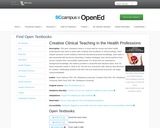
This peer reviewed e-book is a must-read for nurses and other health professionals who strive to teach with creativity and excellence in clinical settings. Each chapter presents current evidence informed educational practice knowledge. Each topic is also presented with text boxes describing ‘Creative Strategies’ that clinical teachers from across Canada have successfully implemented. For those who are interested in background knowledge, the authors provided a comprehensive literature base. And, for those interested mainly in 'what to do,' the text box summaries offer step-by-step directions for creative, challenging activities that both new and experienced instructors can begin using immediately.

Graphic organizers assist the development of comparative vocabulary and generate discussions of analogy and metaphor in art as students go on a real or virtual tour of an art gallery.
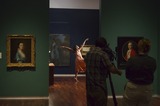
Join Ririe Woodbury Dance Company and the Utah Museum of Fine Arts as we dance, doodle, and discover the dynamic world of contemporary art and dance! Creative Leaps guides K-6 students on a diverse journey to react and respond to amazing works of performing and visual art. Through an exploration of storytelling, elements, and the similarities and differences between art forms, students will be empowered to creatively and actively express their own ideas and feelings about the world around them and learn that sources of inspiration can be found everywhere.
This resource link will direct you to the form to access the video. Once you complete the form, you will have access to the full video.
LEARNING OUTCOMES:
STUDENTS WILL...
• Explore the basic elements of expression that contemporary visual and performing art are built on
• Discover similarities and differences of contemporary dance and visual art
• Learn that contemporary art is a way to actively express and respond to ideas, feelings, and topics that are present in our world today and represents diverse voices and backgrounds
• Be creative and use art to express themselves through various activities
• Understand that artists find inspiration through many different forms (for example - other works of art, human body and movement, the place or the environment the artist is in, or what is going on in the world)
• Observe and learn about contemporary artists as well as many forms of contemporary art in our own community and other communities (dance, sculpture, stop-motion film, painting, mural, representative work, and abstract work)
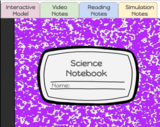
Creative Notetaking LessonThis lesson is covers the 5th grade Science standard listed below. Students work through a creative notetaking notebook where they use a model, video, reading and simulation to learn how plants use air, water and energy from the sun to produce the matter they need to grow. This lesson can be asynchronous and can be virtual. It can also be something you do face-to-face with students. I took lessons and acitvities from Science lessons created and used by Granite School District. Standard 5.3.1Construct an explanation that plants use air, water, and energy from sunlight to produce plant matter needed for growth. Emphasize photosynthesis at a conceptual level and that plant matter comes mostly from air and water, not from the soil.

After reading a short story, students use freewriting as a catalyst for a literary analysis essay.

Using books by Ezra Jack Keats as inspiration, students explore problems and solutions through read-alouds, discussion, and an interactive bulletin board.

In this movement lesson, students will use the ideas of shape (symmetrical and asymmetrical), stillness vs. movement and levels in space (high, medium and low) to move across the room.

In this video from The African Americans: Many Rivers to Cross, we learn that despite the efforts of Europeans to erase the identities of slaves, they created a new culture.

Students are exposed to wordless picture books and begin developing story lines, both orally and in writing, using an online, interactive story map.

Students practice writing detailed, sensory-rich descriptions by framing a small piece of nature and freewriting about it. From this minilesson, students can develop a variety of types of writing.
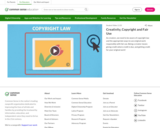
As creators, we need to be aware of copyright law and the appropriate ways to use original work responsibly with fair use. Being a creator means giving credit where credit is due and getting credit for your original work!
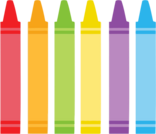
Sabotage a play area and seek input from your child(ren) to help problem-solve a solution. Remove a preferred play item and ask them what they could replace it with. Ask them to tell you what they are planning to build and predict what the outcome will be.

This is a lesson plan created by Copyright & Creativity for Ethical Digital Citizens. In this lesson plan, Students learn about ownership concepts associated with creative work and how their work might be shared. This resource includes the lesson plan (pdf) and links to an accompanying Google Slides presentation and YouTube video.
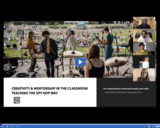
Three examples of the hour-long 'Teachng The Spy Hop Way' teacher training, where Myke Johnson takes participants through the different philosophies of creative design and youth engagement. These techniques foster youth voice and empowerment, as well as creating a safe space for artistic exploration. Some of these tools include listening techniques, inquiry based learning structures and quick, fun activities that transform a classroom into a hands-on artistic learning environment.
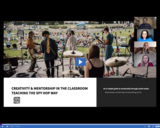
Three examples of the hour-long 'Teachng The Spy Hop Way' teacher training, where Myke Johnson takes participants through the different philosophies of creative design and youth engagement. These techniques foster youth voice and empowerment, as well as creating a safe space for artistic exploration. Some of these tools include listening techniques, inquiry based learning structures and quick, fun activities that transform a classroom into a hands-on artistic learning environment.
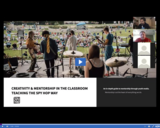
Three examples of the hour-long 'Teachng The Spy Hop Way' teacher training, where Myke Johnson takes participants through the different philosophies of creative design and youth engagement. These techniques foster youth voice and empowerment, as well as creating a safe space for artistic exploration. Some of these tools include listening techniques, inquiry based learning structures and quick, fun activities that transform a classroom into a hands-on artistic learning environment.

This lesson asks students to reflect on their own roles as both consumers and creators of creative work. Students are introduced to:
The purpose of copyright and the protections it provides to creators and copyright’s limitations—what copyright doesn’t cover, such as facts and ideas, fair use, and public domain works.